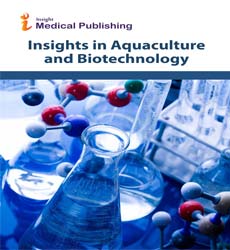The Economic and Social potential of Seaweed Faming in Brazil
Abstract
Red algae (Rhodophyta) are grown in several countries for the extraction of raw materials for the production of sulfated polysaccharides, also called phycolloids (agar and carrageenan) used mainly in the food, cosmetics, agriculture and pharmaceutical industries as a stabilizing, gelatinizing and thickener agent and emulsifier (FAO 2003). Therefore, the worldwide demand for seaweed crops as a raw material for the production of carrageenans is growing, mainly due to the increase in new markets (Ask & Azanza 2002). An annual increase of about 5% per year is estimated for the next decades (Eklöf et al. 2005). Currently the macroalgae Kappaphycus alvarezii is the only species grown commercially in Brazil as a source of raw material for the production of carrageenan. In 1998 the macroalgae Kappaphycus alvarezii was introduced in Brazil on the coast of Rio de Janeiro State, for academic studies, to obtain knowledge of its biology, cultivation and the possibility of growing it commercially in this place without environmental damage and social benefits. In this way, information on carrageenan yield and growth rates was obtained to demonstrate the economic potential of this species, in addition to expanding and adapting the cultivation technologies of this species in the coast of Brazil. For decades we have been watching the relevant role that seaweed farming has played in generating jobs and income for coastal communities, in addition to the ecological and socio-economic importance, the increase in raw materials to supply industrial demand and, consequently, the decrease in predatory exploitation of natural banks. Currently, projects sponsored by FAO in coastal communities have been oriented towards the rational use of this marine resource, replacing extractive activities with sustainable ones like mariculture. Through this activity, an alternative source of income was generated for fishermen, in addition to reducing the irrational exploitation of natural banks. Furthermore, environmentally, seaweeds is important to remove excess nutrients in crops integrated with fish, molluscs and crustaceans, serving as a biological attractor, since the cultivation increases the substrate for their reproduction, shelter, food supply and oxygen production.
Open Access Journals
- Aquaculture & Veterinary Science
- Chemistry & Chemical Sciences
- Clinical Sciences
- Engineering
- General Science
- Genetics & Molecular Biology
- Health Care & Nursing
- Immunology & Microbiology
- Materials Science
- Mathematics & Physics
- Medical Sciences
- Neurology & Psychiatry
- Oncology & Cancer Science
- Pharmaceutical Sciences
